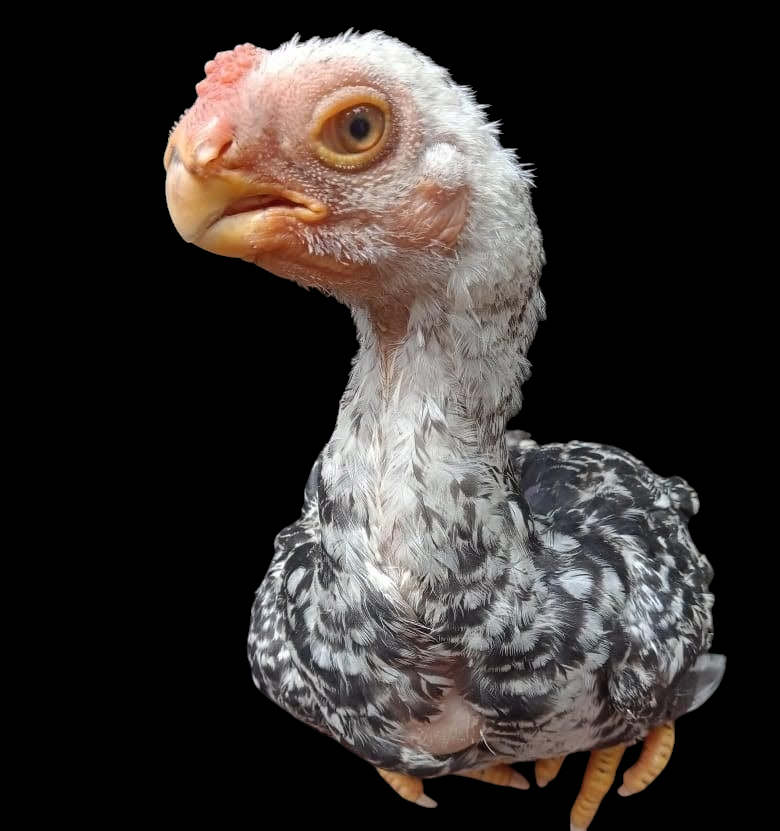Your cart is currently empty!
Vaccination Guide for Chickens: From Chicks to Adults

Introduction
Vaccination plays a crucial role in protecting chickens from various infectious diseases that can severely impact their health, growth, and productivity. Whether raising chickens for commercial farming or backyard poultry, a proper vaccination schedule ensures a strong immune system and reduces the risk of disease outbreaks. This guide outlines essential vaccinations for chickens from day-old chicks to fully grown birds.
Why Vaccinate Chickens?
Vaccinations help:
- Prevent deadly diseases such as Marek’s disease, Newcastle disease, and Avian influenza.
- Improve flock immunity, reducing mortality rates.
- Enhance growth and egg production by maintaining overall health.
- Minimize the need for antibiotics, promoting natural disease resistance.
Vaccination Schedule for Chickens
Vaccination should be done at different stages of a chicken’s life based on the type of disease, administration method, and farm conditions.
1. Vaccination at Day-Old Stage (0-1 Day)
Newly hatched chicks have weak immunity and require early protection against serious infections.
- Marek’s Disease Vaccine
- Purpose: Protects against Marek’s disease, a viral infection causing paralysis and tumors.
- Method: Subcutaneous injection at the hatchery.
- Why Important? Marek’s disease has no cure, and vaccination is the only preventive measure.
2. Vaccination at 7 Days Old
As chicks grow, they become more vulnerable to respiratory and viral infections.
- Newcastle Disease Vaccine (NDV – First Dose)
- Purpose: Protects against Newcastle disease, a highly contagious respiratory and neurological disease.
- Method: Oral (drinking water) or eye drop.
- Why Important? Newcastle disease can cause severe breathing issues, reduced egg production, and sudden death.
- Infectious Bronchitis Vaccine
- Purpose: Prevents respiratory distress caused by infectious bronchitis.
- Method: Spray or drinking water.
- Why Important? Helps prevent long-term respiratory problems in laying hens.
3. Vaccination at 14 Days Old
At this stage, chicks begin developing their immune response but still require booster shots for complete protection.
- Gumboro Disease (Infectious Bursal Disease) Vaccine – First Dose
- Purpose: Prevents immune suppression in birds, making them vulnerable to other infections.
- Method: Drinking water or oral drop.
- Why Important? Gumboro disease weakens immune defense, leading to poor growth and higher mortality rates.
4. Vaccination at 21 Days Old
By this age, the immune system is stronger but still developing, requiring additional boosters.
- Newcastle Disease (Booster Dose)
- Method: Drinking water or eye drop.
- Why Important? Reinforces previous vaccination for long-term immunity.
- Gumboro Disease (Booster Dose)
- Method: Drinking water or oral drop.
- Why Important? Strengthens resistance to infectious bursal disease.
5. Vaccination at 30-35 Days Old
This stage marks the transition from chick to pullet (young hen) or cockerel (young rooster), requiring additional vaccines.
- Fowl Pox Vaccine
- Purpose: Prevents fowl pox, which causes skin lesions and affects egg-laying.
- Method: Wing web stab.
- Why Important? Fowl pox spreads easily and can significantly affect productivity.
- Avian Encephalomyelitis Vaccine
- Purpose: Protects against viral infection affecting coordination and nervous system.
- Method: Drinking water.
- Why Important? Prevents neurological disorders in growing birds.
6. Vaccination at 6-8 Weeks Old
Birds are now more resistant but still require reinforcement for long-term protection.
- Infectious Coryza Vaccine
- Purpose: Prevents respiratory infections causing facial swelling and breathing issues.
- Method: Injection.
- Why Important? Ensures stronger respiratory health, reducing risk of secondary infections.
- Salmonella Vaccine
- Purpose: Protects against salmonella infections, which affect digestion and can spread to humans.
- Method: Injection.
- Why Important? Important for commercial poultry farms to prevent foodborne illness.
7. Vaccination at 12-16 Weeks Old (Before Laying Period)
Before chickens start laying eggs, they require immunity against diseases that can impact egg production.
- Egg Drop Syndrome (EDS) Vaccine
- Purpose: Prevents EDS, which causes poor eggshell quality and reduced egg laying.
- Method: Injection.
- Why Important? Protects against drastic loss in egg production.
- Fowl Cholera Vaccine
- Purpose: Prevents bacterial infection leading to sudden death and weakness.
- Method: Injection.
- Why Important? Helps maintain flock health and longevity.
8. Annual or Booster Vaccinations for Adult Chickens
Even after reaching adulthood, chickens require periodic boosters to maintain immunity.
- Newcastle Disease Booster (every 6 months)
- Fowl Pox Booster (annually)
- Salmonella Booster (annually for breeders and layers)
Best Practices for Vaccination
To ensure vaccine effectiveness, follow these best practices:
- Store vaccines properly: Keep them at recommended temperatures to maintain potency.
- Follow correct administration methods: Oral, injection, eye drop, or wing web stab should be done accurately.
- Use clean equipment: Prevent contamination by sterilizing syringes and vaccine applicators.
- Avoid vaccinating sick birds: Vaccines work best on healthy chickens.
- Maintain good farm hygiene: Clean water, feed, and coop conditions help reduce disease spread.
Conclusion
Vaccinating chickens from an early age is the best way to ensure a healthy flock and prevent deadly diseases. A well-structured vaccination program provides long-term immunity, enhances growth and productivity, and ensures better egg production in layers. Farmers and backyard poultry keepers should adhere to the recommended vaccination schedule for stronger, disease-resistant flocks.